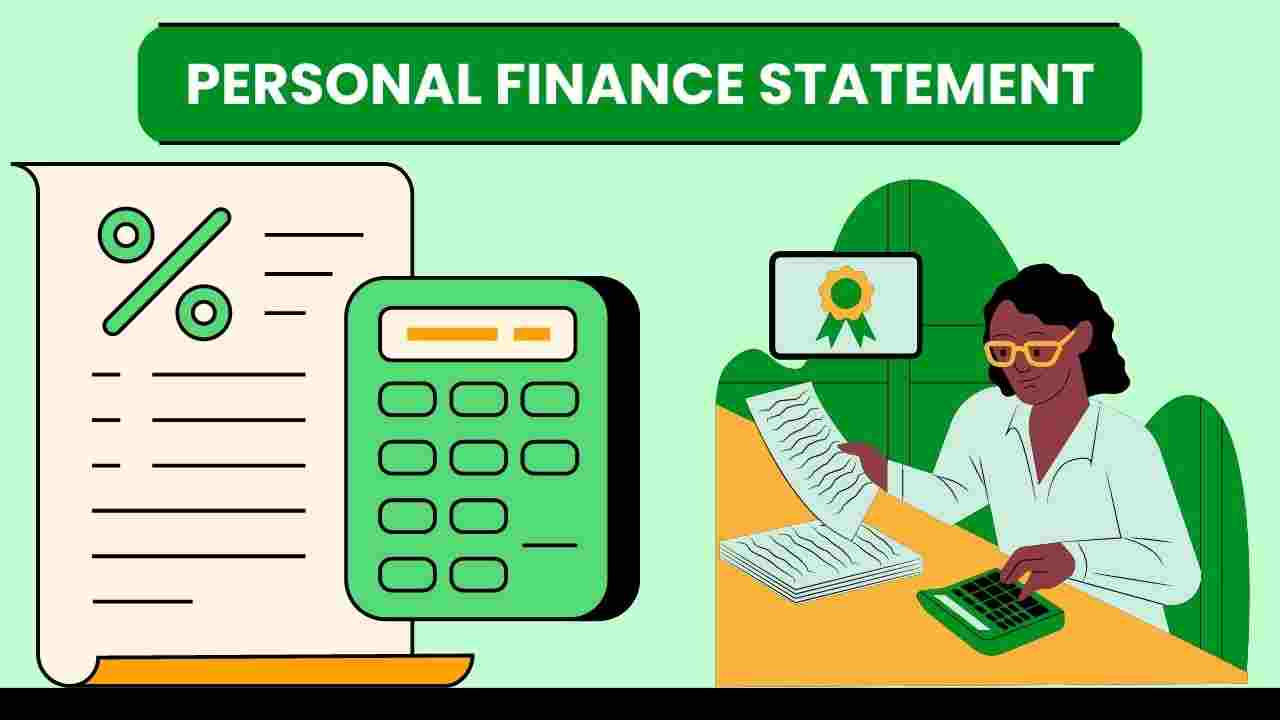Introduction
Personal finance plays a crucial role in our lives, enabling us to manage our money effectively and achieve our financial goals. To ensure financial stability and make informed decisions, individuals often utilize tools such as personal financial statements. In this article, we will explore the definition, uses, and provide an example of a personal financial statement, empowering you with the knowledge to take control of your finances.
What is a Personal Financial Statement?
A personal financial statement is a detailed report that provides a comprehensive overview of an individual's financial position at a specific moment in time. It provides an overview of one's assets, liabilities, and net worth. Essentially, it is a snapshot of your financial health, summarizing your current financial standing and serving as a valuable tool for assessing your progress toward your financial objectives.
Uses of a Personal Financial Statement
1. Evaluating Net Worth: A personal financial statement allows you to calculate your net worth by subtracting your total liabilities from your total assets. Net worth represents your financial wealth and can help gauge your progress over time. By monitoring changes in your net worth, you can assess your financial health, identify areas for improvement, and make informed decisions.
2. Financial Planning: When creating a personal financial plan, a personal financial statement serves as a foundation. It helps you understand your current financial situation and set realistic goals for the future. By analyzing your assets and liabilities, you can prioritize your spending, identify areas where you can save, and allocate funds for investments, retirement, or other financial endeavors.
3. Applying for Loans: Lenders often require personal financial statements when evaluating loan applications. Whether you're applying for a mortgage, car loan, or personal loan, a financial statement provides lenders with a comprehensive overview of your financial stability and creditworthiness. It demonstrates your ability to repay the loan and can help secure better loan terms.
4. Tracking Expenses: Creating a personal financial statement involves categorizing your expenses, enabling you to identify patterns and track your spending habits. This insight allows you to make informed decisions, reduce unnecessary expenses, and allocate your resources more effectively.
5. Estate Planning: A personal financial statement is a valuable tool for estate planning. By detailing your assets, liabilities, and net worth, you can plan for the distribution of your wealth to your loved ones after your passing. It helps ensure that your assets are managed according to your wishes and can simplify the probate process.
Components of a Personal Financial Statement
1. Assets: Assets include items of value that you own, such as cash, investments, real estate, vehicles, and personal possessions. These are categorized as liquid assets (easily converted to cash) and non-liquid assets (long-term investments or physical assets).
2. Liabilities: Liabilities encompass your debts and financial obligations. They include loans, credit card balances, mortgages, student loans, and any other outstanding debts.
3. Net Worth: Net worth is calculated by subtracting your total liabilities from your total assets. It represents your financial health and indicates your overall financial position.
Example of a Personal Financial Statement
Here is an example to illustrate how a personal financial statement can be structured: Personal Financial Statement As of [Date]
| ASSETS | AMOUNT |
| Cash | $10,000 |
| Savings Account | $15,000 |
| Investments | |
| - Stocks | $20,000 |
| - Bonds | $5,000 |
| Retirement Accounts | |
| - 401(k) | $30,000 |
| - IRA | $10,000 |
| Real Estate | |
| - Primary Residence | $200,000 |
| - Rental Property | $150,000 |
| Vehicles | |
| - Car 1 | $15,000 |
| - Car 2 | $10,000 |
| Personal Possessions | $5,000 |
| Total Assets | $470,000 |
| LIABILITIES | AMOUNT |
| Mortgage | $150,000 |
| Auto Loan | $10,000 |
| Student Loan | $20,000 |
| Credit Card Debt | $5,000 |
| Total Liabilities | $185,000 |
| NET WORTH | AMOUNT |
| Net Worth | $285,000 |
Conclusion
Understanding your financial position is essential for effective money management and achieving your financial goals. A personal financial statement provides a comprehensive overview of your assets, liabilities, and net worth, enabling you to make informed decisions about your finances. By utilizing this valuable tool, you can assess your progress, plan for the future, and take control of your personal finances. Remember, consistently updating your personal financial statement allows you to track your financial growth and adapt your strategies accordingly. Empower yourself with knowledge, take charge of your finances, and pave the way to a secure financial future.

